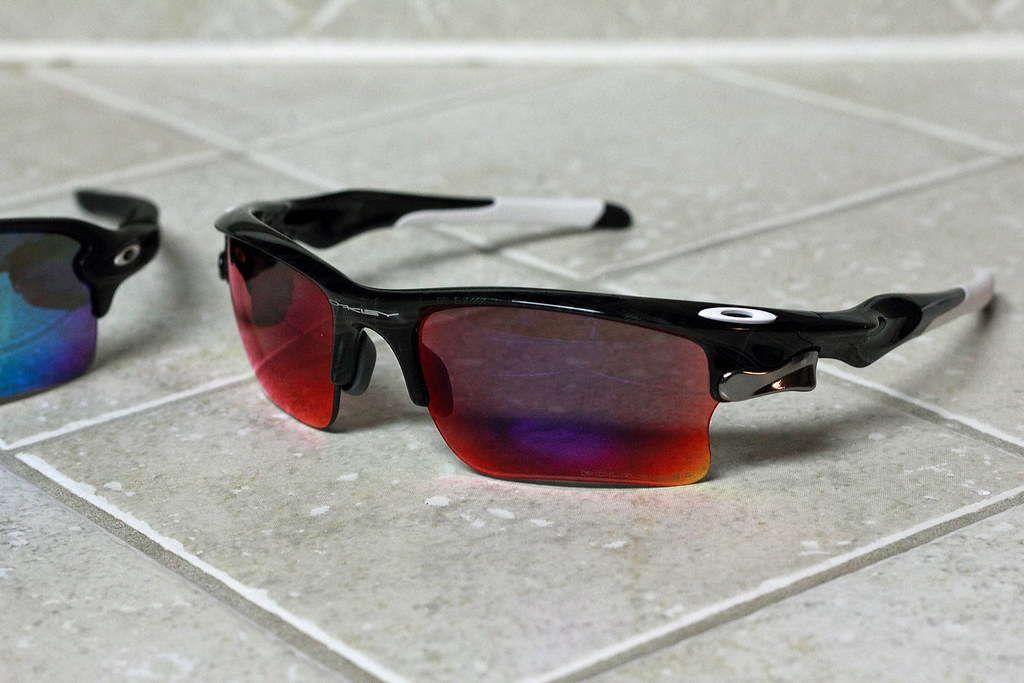Difference Between Oakley Fuel Cell and Gascan
From the classic aviators to modern, classy wayfarers, cat eye, and robotic frames, sunglasses have come a long way over time. Sunglasses are a practical daily accessory that has been a hallmark of style since ages. If it is bright and sunny outside, the first thing you’d probably go for is your sunglasses without even giving it a second thought. But sunglasses do more than just protect your eyes from the harmful UV rays. If you’re an outdoor enthusiast or you spend a lot of time commuting in the daytime, you’d think twice before getting a pair of sunglasses because you want the right pair. But with Oakley high-performance sunglasses, you won’t think twice. We are here to talk about two of the Oakley’s most iconic frames – the Fuel Cell and the Gascan. Both Fuel Cell and Gascan look relatively similar but with some key differences. Let’s take a look.

Oakley Gascan
Designed with the much lighter and stress-resistant O-Matter frame, Oakley Gascan is one of the most popular and the oldest line-up from the Oakley family of sunglasses. The lenses of the Gascan are cut from a single lens shield for a unique curvature design which makes this pair of sunglasses stand out. These are made from nylon-infused plastic which makes it more flexible than acetate and they are much less brittle, allowing it to bend more to adjust to your face for a more comfortable feel. It might look like a cheap plastic material, but it’s a perfect combo of flexibility and durability, and the lenses are seamlessly designed to protect your eyes from the harmful UV rays and the blue light for ultimate eye protection. The Gascan has been around for years and it still continues to woe athletes and casual wearers alike. Gascan is a testament to Oakley’s years-old legacy and is still in production till date.

Oakley Fuel Cell
Oakley Fuel Cell is like the bigger Gascan with a bigger frame for the big heads. In terms of design, the Fuel Cell is very similar to the Gascan; in fact, they are pretty indistinguishable when you keep them side by side unless you know what you’re looking for. Similarly, these are made of stress-resistant, durable O-Matter and exclusive material patented by Oakley for a premium comfort and a classy look. The Fuel Cell features two lenses that are cut from a single shield of the Oakley’s proprietary impact resistant material, Plutonite, for optical clarity. It also features high-quality HD polarized lenses that cut through reflected glare for unmatched visual fidelity from all angles. The wing is more streamlined than the simple, straight design of the Gascan, which only adds to the already distinct design of the Fuel Cell. The Fuel Cell has the same wraparound design as well, but the temples are a bit carved that gives you an edgy look.
Difference between Oakley Fuel Cell and Gascan
Design
– Oakley Gascan is one of the most popular and the oldest line-up from the Oakley family of sunglasses. Both Gascan and Fuel Cell have the same wraparound design featured with the Oakley’s proprietary stress-resistant O-Matter material for superior durability and flexibility. In terms of design aesthetics, both are pretty indistinguishable. However, the Gascan is a simple, straight design from the temple, while the Fuel Cell is little bit inward at the end of the stems. The Fuel Cell is basically the bigger Gascan with a bigger frame for the big heads.
Size
– Both look awfully similar, but one can clearly see the difference in their sizes. The Gascan is smaller in size and the bridge is narrower than the Fuel Cell’s. The Fuel Cell puts in around 4 mm of additional space between the lenses. Although, both are the same size at the front, the Gascan with an additional height of 5 mm makes for a comfortable everyday wear for the ones with larger, wider heads. Besides, both have removable temples and replaceable icons and arms.
Curvature
– One key difference between the Gascan and the Fuel Cell is the curvature around the arms or the temples. While the Gascan is a pretty flat design around the temple, the Fuel Cell has a more aggressive curve at the end of the stems, which allows for a more secure and comfortable fit. The Fuel Cell has two curves and the arc is angled inwards, which sit firmly to the head for a more snugly fit. The Gascan is pretty straight in terms of lens curvature.
Oakley Fuel Cell vs. Gascan: Comparison Chart

Summary
Both are made of Oakley’s proprietary stress-resistant and impact-resistant O-Matter material which makes them super durable, super flexible and super lightweight. Both have the same 3-point fit system which means the temple is straight back hooking behind your ear for a great fit. The one key difference where they part different ways is the height of the lens. The height of the lens is 34.5 mm in Gascan whereas in Fuel Cell, it’s 38 mm, so that’s where it gets bigger. As far as prescription goes, both of these hold a wide range of prescriptions to choose from. So, the Fuel Cell is like the bigger Gascan with a bigger frame for the bigger, wider heads. The rest is pretty much the same.
- Difference Between Caucus and Primary - June 18, 2024
- Difference Between PPO and POS - May 30, 2024
- Difference Between RFID and NFC - May 28, 2024
Search DifferenceBetween.net :
Leave a Response
References :
[0]Darling, Jamie. The Ultimate Guide to Sunglasses. North Carolina, United States: Lulu Press, 2015. Print
[1]Schnaars, Steven P. Marketing Strategy. New York, United States: Simon and Schuster, 1998. Print
[2]Image credit: https://live.staticflickr.com/543/18661684474_40b4fd064a_b.jpg
[3]Image credit: https://commons.wikimedia.org/wiki/File:Oakley_sunglasses.jpg
